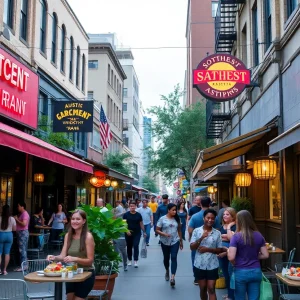Austin’s City Council Faces Neighborhood Pushback Over Zoning Changes
Austin is buzzing with chatter following a recent decision by the City Council that could change the landscape of a small slice of the city forever. On a decisive vote of 8-3, council members approved a zoning change for the property located at 1209 W. Fifth St.. This change would allow developers to build up to a towering 120 feet, a proposal that has triggered heated debates among local residents.
Neighbors Voice Their Concerns
The decision, made during last week’s meeting, raised eyebrows, especially within the Old West Austin Neighborhood Association. Several neighbors voiced their concerns, fearing that this 120-foot looming structure might disrupt the charm and character of their historic district. Mayor Kirk Watson, along with council members Alison Alter and Mackenzie Kelly, was among those who voted against the proposal after hearing the objections.
During the session, Zoning Officer Joi Harden outlined the specific limitations set forth in the approved zoning change. The new regulations indicate that the maximum height of any buildings on the property can be up to 120 feet for residential developments, 90 feet for commercial, and the hybrid option allows for heights reaching 120 feet provided that at least 70 percent of the building is allocated for residential use. Furthermore, the approval also opens the door for hotel or motel use to comprise up to 50 percent of the residential requirement.
The Developer’s Perspective
The zoning changes are classified as Limited Industrial Service-Planned Development Area-Neighborhood Plan (LI-PDA-NP) zoning. Council member Zo Qadri, representing the district, spoke in favor of the new zoning, commending both the neighborhood advocates who raised their concerns and the developer for their collaborative efforts with the community. “I believe we’ve landed in a place that satisfies the main concerns regarding affordability and the pedestrian environment,” Qadri noted.
Conflicting Views on Community Benefits
Despite the council’s approval, neighbors are staunchly opposed. Sheila Lyon, chair of the Old West Austin Neighborhood Association zoning committee, expressed her reservations during the council meeting. She pointed out a previous success in negotiating with other developers, citing how they agreed to a 120-foot height while also including numerous benefits for the community. Lyon firmly stated that the current proposal does not match this collaborative spirit and does not align with the community’s values.
James Cousar, an attorney and local advocate, voiced his concerns about the zoning changes. He expressed disappointment that the neighborhood’s long-standing 60-foot cap on new developments was not being upheld, highlighting the success of other projects that respected this limit. Cousar concluded, “We should not be building 120-foot-tall buildings on less than half a lot.”
Developer’s Promises
Despite pushback, Leah Bojo, representing the developer, assured the council that two other private restrictive covenants were in place to address community concerns. “We have bigger trees and closer-together trees than would be otherwise required,” she said, emphasizing their commitment to creating a pedestrian-friendly environment by incorporating elements similar to the city’s ETOD program.
What’s Next for Austin?
As the dust settles, the matter is expected to return to the City Council for subsequent readings on November 21. With strong opinions on both sides, the upcoming discussions promise to be just as lively as the last.
The amalgamation of historic charm and modern development is a challenge many growing cities face—and as Austin navigates these changes, its residents are left to wonder just how tall is too tall for their beloved neighborhoods.









